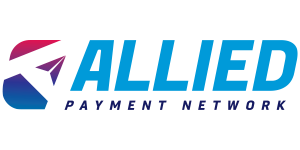
The introduction of real-time payment networks, like the Federal Reserve’s FedNow and The Clearing House Payment Company’s RTP, has been touted as a significant advancement in payment processing — and rightfully so. The ability to make payments in real-time is a feature that consumers and small and medium businesses increasingly see as mere table stakes.
These networks give banks a way to enable faster, more efficient payments that may very well present subsequent opportunities for growth and innovation that could help them compete with the payment apps, digital banks and biller direct sites that have been eating into their bottom line. As Douglas Brown, president of NCR Digital Banking, points out, “Real-time payments offer a unique opportunity for community banks to innovate and differentiate themselves from their competitors.”
However, the promise of these networks does not come without risks, and it’s critical for community banks to understand the whole picture. While the networks themselves are efficient, banks must understand that the networks are essentially nothing on their own. Institutions must layer specific digital banking tools on top of them to create any kind of customer experience. As Chris Nichols, director of capital markets of Southstate Bank, has noted, “Real-time payment networks are rails, not products. They are simply the infrastructure that allows payment transactions to occur in real time.” (Southstate Bank is a unit of Winter Haven, Florida-based SouthState Corp., which has $44 billion in assets.)
Just as an oil pipeline to your front door won’t help you fill your car with gas without the help of a refinery, FedNow and RTP will not produce fruit for banks unless they are paired with a technology stack built specifically to accommodate them.
This lack of native interfaces that are compatible with real-time payments could put community banks at a significant disadvantage when competing with larger banks and fintech startups that have invested heavily in creating seamless user experiences. As Nichols states, “Fintechs and big banks are already miles ahead when it comes to user experience, and they’re not sitting still.”
Bank customers don’t care about crude oil; they want gas. It’s the gas that allows them to get in their cars, go places and have experiences. This presents a challenge for community banks, which may not have the resources to create interfaces that connect their digital banking platform to these networks — much less build a compelling and competitive user experience.
The cost of implementing and maintaining a real-time payments system can be a significant burden for community banks. And while the Federal Reserve has promised that FedNow will be affordable and accessible for all banks, smaller institutions may still struggle to meet the costs of implementation. This could be a problem if community banks are forced to compete with larger institutions that have more resources and can more easily afford to implement and maintain a functional, experience based real-time payments system.
It’s critical that community bankers not walk blindly into the shiny light reflected from these new networks. It’s more imperative than ever to explore partnering with a technology provider that is specifically prepared to turn these networks into experiences.
Four Questions to Ask When Considering a Payments Partner:
- What networks and vehicles do you plan to leverage to allow us access to consumer real-time payments? Who is managing those relationships?
- What mitigations do you have in place if we initiate a real-time payment through RTP and the recipient institution uses FedNow, and vice versa?
- What updates have you made to the consumer facing user interface to best leverage these new networks?
- What risk management policies and procedures have you put in place to keep your customers and bank safe?
If your payments partner doesn’t have a good answer for these questions, it may be a red flag.
In conclusion, community banks need to act now to ensure that they are well-positioned to avoid the pitfalls and capitalize on the opportunity that the future of real-time payments offers. Develop a plan — not only to ensure your bank’s technology provider is ready, but also to ensure that your infrastructure, policies, procedures, executive team, and customers are all on the same page. Do this, and real time will be a good time.


